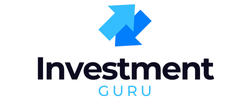Buying your first home is exciting, but it also comes with more expenses than many people expect. On top of saving for a down payment, you’ll also face closing costs—things like appraisal fees, title insurance, and lender charges. These costs can easily add up to several thousand dollars, which can feel overwhelming if you’re already stretching your budget to afford the home.
The good news is, you don’t always have to cover closing costs on your own. In 2025, there are many programs and options designed to help first-time buyers. From government grants and local assistance funds to lender credits and even seller contributions, there are multiple ways to reduce what you pay out of pocket.
In this guide, we’ll explain in simple terms what closing costs are, how much you might expect to pay, and the different ways to get help covering them. We’ll also share some practical tips on negotiating with your lender or seller so you can keep more money in your pocket.
If you’re ready to buy your first home but worried about the extra fees at the finish line, this article will show you real, practical ways to make closing costs easier to manage.
Table of Contents
What Are Closing Costs and Why Do They Matter?

Closing costs are the fees and expenses buyers pay to finalize a mortgage. According to Consumer Financial Protection Bureau (CFPB), they cover appraisal, title insurance, taxes, and lender charges. For a $300,000 home, closing costs may range from $6,000 to $15,000. Without planning, these costs can derail a purchase.
First Time Buyer Closing Costs Help 2025: Key Options
Good news: Programs nationwide aim to help first-time buyers bridge this gap. Below are the leading choices in 2025, plus how to apply effectively.
1. Down Payment Assistance & Grant Programs
Many states and cities offer grants or forgivable loans covering part of your down payment and closing costs. These programs usually target first-time buyers with moderate incomes. For example:
- State Housing Finance Agencies (HFAs) – Offer assistance grants that never require repayment if you stay in the home a certain number of years.
- Local Nonprofit Funds – Organizations may provide $3,000–$10,000 toward closing.
- Employer-Assisted Housing Programs – Some employers assist staff with up-front purchase costs.
Tip: Search “[Your State] Housing Finance Agency first time buyer programs 2025” for the most updated local opportunities.
2. Lender Credits
Your lender may let you accept a slightly higher interest rate in exchange for credits that offset closing costs. This option works well if you plan to refinance within a few years or if cash flow during purchase is more important than long-term savings.
3. Federal Programs in 2025
Several federal initiatives can ease your burden:
- FHA Loans – Require as little as 3.5% down. Sellers can contribute up to 6% of closing costs.
- VA Loans – Available to veterans. No down payment and limited closing cost charges by law (VA.gov).
- USDA Loans – For rural buyers; sellers can cover closing costs fully.
4. Seller Concessions
Negotiating with sellers is still powerful in 2025. Many markets are balanced, meaning motivated sellers are more open to offering credit toward buyer closing costs. Always ask your agent about including this request in the purchase agreement.

2025 Closing Cost Estimates: What to Expect
Here’s a breakdown of standard closing fees and possible savings strategies:
| Fee Type | Typical Amount | Possible Help Source |
|---|---|---|
| Appraisal Fee | $500–$700 | Lender pays through credits |
| Title Insurance | $1,000–$2,000 | State programs may cover |
| Origination Fees | 0.5–1% of loan | Lender credits or negotiation |
| Government Recording Fees | $300–$600 | Grant programs |
| Prepaid Taxes/Insurance | Varies | Seller concessions |
Step-by-Step: How to Apply for Closing Cost Assistance
Follow these steps to maximize your eligibility for first-time buyer programs:
- Run Your Numbers: Use a mortgage calculator to know your estimated closing costs early.
- Check Eligibility: Look at income caps, purchase price limits, and credit score requirements for your state and local programs.
- Compare Multiple Lenders: Each lender offers different credit packages and partner program access.
- Gather Documentation: Tax returns, pay stubs, credit history, and proof of residency.
- Coordinate Timing: Some grants require completion of homebuyer education courses before you close.
Digital Tools to Manage Closing Cost Assistance
Technology in 2025 makes planning for closing costs more transparent. Here’s how to set up and use common apps:
Zillow Home Loans Closing Cost Calculator
Setup: Go to Zillow’s mortgage closing cost calculator tool, enter your purchase price, loan type, and state. It immediately generates closing cost estimates tailored to your location.
Costs: Free to use with optional pre-approval application. In-app pre-approval requires submitting documentation but has no direct fee. You can save multiple scenarios to your account to compare later.
Rocket Mortgage Online Dashboard
Setup: Create a free Rocket Mortgage account. Upload income documents, ID verification, and credit authorization. Their dashboard provides grant and credit options linked to your profile.
Costs: No subscription. Standard lender fees apply when borrowing. However, they show tailored offers for closing credit promotions available in your area.
Bankrate Payment and Cost Tracker
Setup: Visit Bankrate.com, input financial info. Save results to an account for ongoing access. Link with budgeting apps like Mint or YNAB for a full overview.
Costs: Free use. Premium budgeting app integrations might charge monthly ($10–$15).
Strategies to Reduce Out-of-Pocket Costs in 2025
- Request multiple loan estimates to leverage competition.
- Ask your agent to prioritize homes where sellers offer concessions upfront.
- Bundle services (title, escrow, and inspection) through your lender’s suggested providers if discounts are offered — but always compare costs independently.
- Check for state tax credits. Some states let you claim up to $2,000 in annual mortgage tax credits once purchased. (See IRS.gov).
Frequently Asked Questions About Closing Cost Help in 2025
1. How much are average closing costs for first-time buyers in 2025?
Expect 2%–5% of the purchase price, averaging $6,000–$15,000 on mid-range homes.
2. Are grants available for both down payments and closing costs?
Yes, many programs now permit funds to be used for either or both categories.
3. Do seller concessions reduce my loan eligibility?
No, but lenders limit concessions to a percentage of price, often 3%–6%, depending on loan type.
4. Can I combine multiple assistance programs?
Yes, though lenders usually coordinate to ensure sources don’t overlap. Many buyers stack programs successfully.
5. Are FHA closing cost contributions allowed in 2025?
Yes. Sellers may pay up to 6% of FHA home sale price toward closing cost assistance.
6. Do I need a first-time buyer education class?
Often yes. State or municipal programs usually require an approved homebuyer class before funding.
7. Can veterans receive closing cost assistance in addition to VA loan perks?
Yes. VA loans already reduce fees, and many nonprofits earmark extra help for veterans.
8. Are online mortgage apps safe to use for grant matching?
Yes, provided they are well-known platforms like Rocket Mortgage or Bankrate. Always confirm privacy settings.
9. How long does it take for grant funding to be applied?
It varies. Some are automatic at closing, others require upfront submission weeks before closing date.
10. Do I repay closing cost grants later?
If it’s a true grant, repayment is not required. Some assistance programs structure help as forgivable loans, which require certain years of occupancy before forgiveness.
Conclusion
For first-time buyers, closing costs in 2025 remain a significant hurdle — but with the right strategy, they’re far from insurmountable. From grants to lender credits, modern apps to tax breaks, the opportunities to reduce your upfront expenses are greater than ever. Take the time to research programs, compare lenders, and explore digital tools that simplify every step of the process. Start planning today, and you’ll be well-positioned to unlock the door to your first home with confidence and financial peace of mind.


